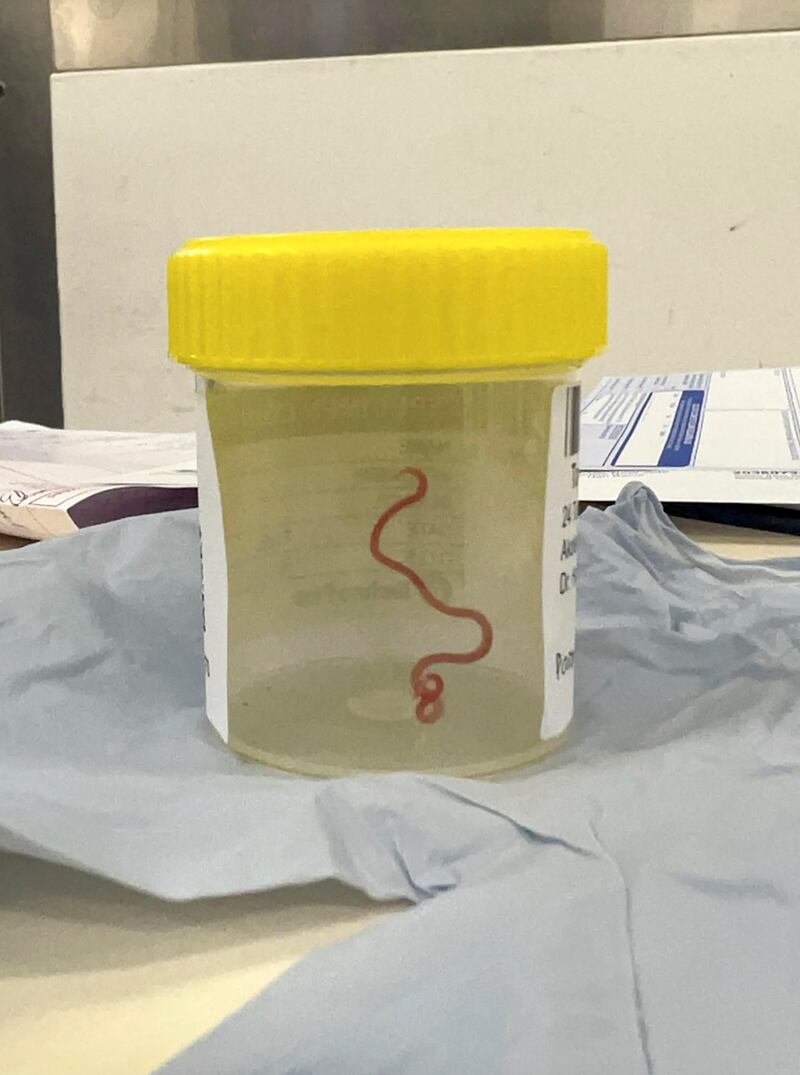A neurosurgeon investigating a woman’s mystery symptoms in an Australian hospital said she plucked a wriggling worm from the patient’s brain.
Surgeon Hari Priya Bandi was performing a biopsy through a hole in the 64-year-old patient’s skull at Canberra Hospital last year when she used forceps to pull out the parasite, which was 3in (8cm) long.
“I just thought ‘What is that? It doesn’t make any sense. But it’s alive and moving’,” she was quoted as saying in the Canberra Times newspaper on Tuesday.
“It continued to move with vigour. We all felt a bit sick,” Dr Bandi added of her operating team.
Russia regains influence in its ‘near abroad’ as West wraps itself in red lines
‘They just want us to work and have babies.’ Exasperation in China as Halloween falls foul of authorities
Tories shout ‘we told you so’ after Rachel Reeves’ tax-and-spend Labour budget
How Trump allies could challenge US presidential election result
The creature was the larva of an Australian native roundworm not previously known to be a human parasite, named Ophidascaris robertsi. The worms are commonly found in carpet pythons.
Dr Bandi and Canberra infectious diseases physician Sanjaya Senanayake are authors of an article about the extraordinary medical case published in the latest edition of the journal Emerging Infectious Diseases.

Dr Senanayake said he was on duty at the hospital in June last year when the worm was found.
“I got a call saying ‘We’ve got a patient with an infection problem. We’ve just removed a live worm from this patient’s brain’,” he told the Australian Broadcasting Corp.
The woman had been admitted to the hospital after experiencing forgetfulness and worsening depression over three months. Scans showed changes in her brain.
A year earlier, she had been admitted to her local hospital in south-east New South Wales state with symptoms including abdominal pain, diarrhoea, a dry cough and night sweats.
Dr Senanayake said the brain biopsy was expected to reveal a cancer or an abscess.
“This patient had been treated … for what was a mystery illness that we thought ultimately was a immunological condition because we hadn’t been able to find a parasite before and then, out of nowhere, this big lump appeared in the frontal part of her brain,” he said.
“Suddenly, with her (Dr Bandi’s) forceps, she’s picking up this thing that’s wriggling. She and everyone in that operating theatre were absolutely stunned,” he added.
[ Lewy body dementia: ‘We were nearly getting a ghost hunter out’Opens in new window ]
The worms’ eggs are commonly shed in snake droppings which are eaten by small mammals. The life cycle continues as other snakes eat the mammals.
The woman lives near a carpet python habitat and forages for native vegetation called warrigal greens to cook.
While she had no direct contact with snakes, scientists hypothesise that she consumed the eggs from the vegetation or her contaminated hands.
The woman is recovering well, doctors have said. - AP



